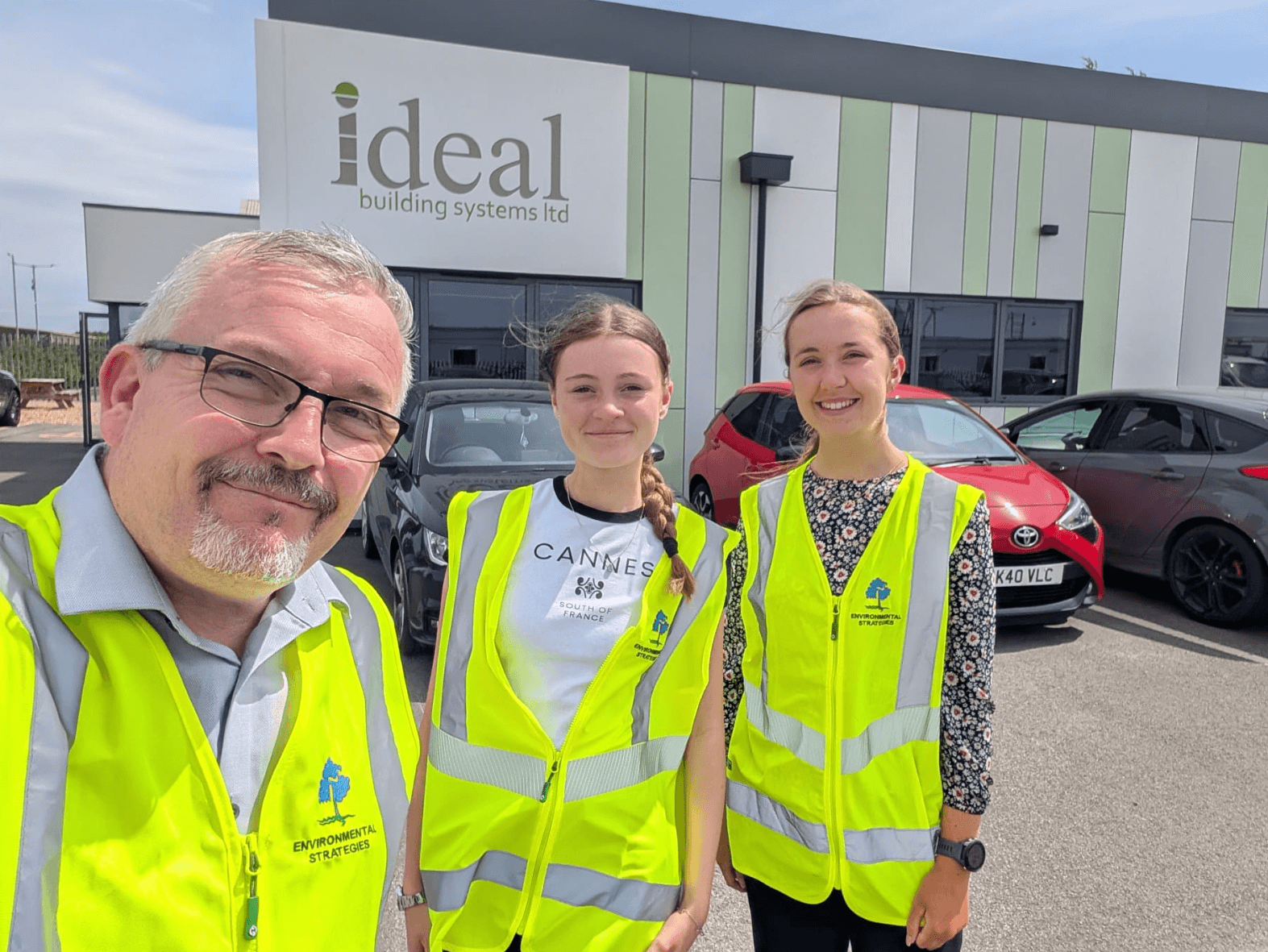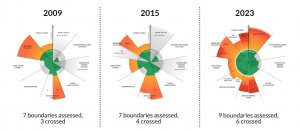Pictured left to rignt: Our lead energy engineer, Sean Casey with Grace Yoxall and our Sustainability Consultant Madison Marner after an energy audit for one of our clients.
My name is Grace Yoxall; I am 14 years old and I’m currently doing work experience at Environmental Strategies Limited. I’ve completed an IEMA sustainability skills for the workforce course and I’ve put together some information about what I’ve learnt.
In the past 150 years we have noticed the warming of the atmosphere and oceans, sea levels have risen, and overall, many extreme weather and climate events. Climate change has always been around. We have experienced unpredictable natural shifts, however since the mid-20th century people began to realise that these events were linked to human activity and we were a main cause of accelerating this climate crisis. For example, the burning of fossil fuels in power stations that we use for electricity such as coal and natural gas releases carbon emissions into the atmosphere, essentially heating up the world.
So, what happens If we don’t take action quickly enough to prevent this global issue from getting increasingly worse? First of all, the change in ocean temperature would cause the coral reefs to be more vulnerable to disease and death, and they would face severe degradation. Next, the Artic is warming faster than anywhere else on Earth, and ice-free summers would become a fearful reality. However, it wouldn’t just be our environment we’d be destroying, heat waves would become more frequent around the world, affecting millions- or even billions of people every 5 years putting them at risk. These are just a few of the horrors we would be confronted with as a society.
So how long do we have? Scientists say that we would need to cut our yearly global emissions in half by 2030 to avoid raising global temperatures by 1.5 degrees Celsius. Despite our efforts, many impacts of global warming are now already irreversible, such as extreme species loss from land to marine animals, as well as major climate disasters and hot temperatures becoming more common.
How can you help? The first step is to be aware. You can do this by tracking your own carbon footprint, or if you’re a business, track it for your organisation. Once you’ve done this, you know how much carbon you need to cut down. If you’re a business which manufactures products, use a life cycle analysis. This means to consider environmental impacts outside of your company’s direct control. Assessing the impacts of a product from the raw materials, all the way through to when it’s finally disposed of.
To reach our global Net Zero goal, everyone needs to do their part in making your life as sustainable as it can be. It can be things as easy as switching the lights off as you leave a room, or things like investing In solar panels on your roof. Environmental Strategies can help businesses to play their part – calculating carbon footprints and advising on reduction actions. Please get in touch to discuss your climate ambitions.




